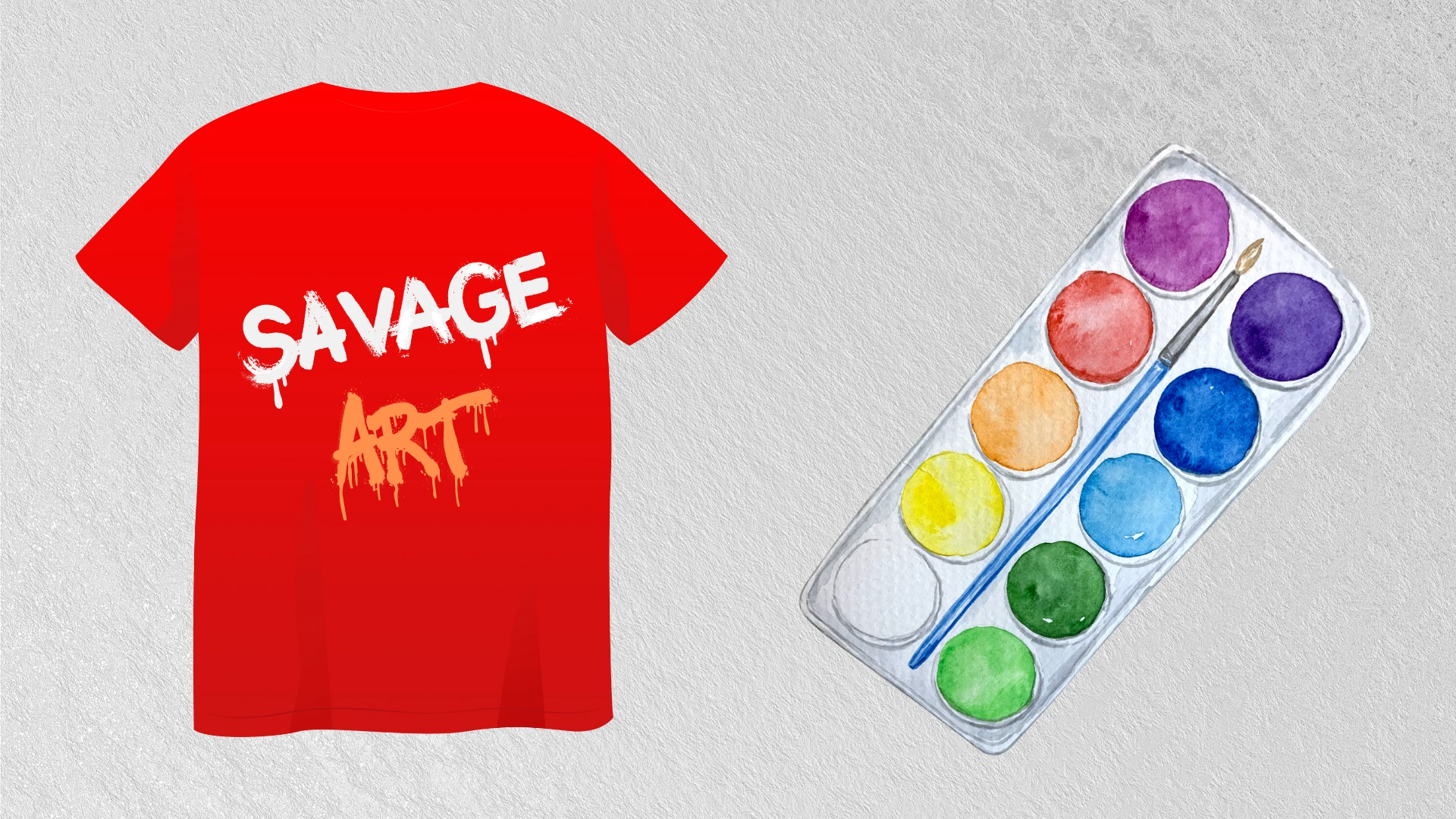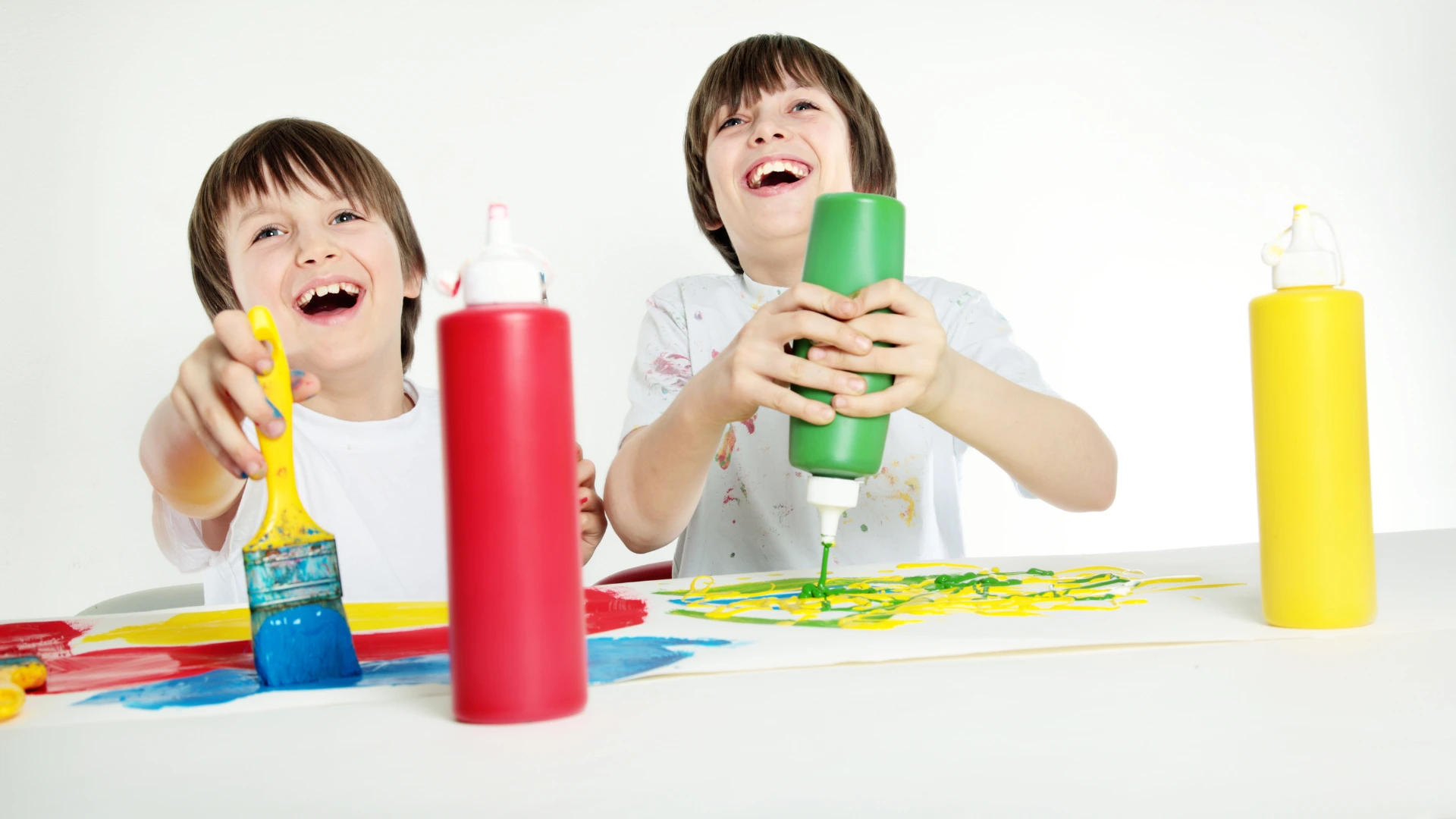Are you fascinated by the idea of creating your own personalized, floral inspired handbag or adding eye catching designs to your plain T-shirt? If so, stick around as we embark on a journey together to uncover if watercolor paint stays on fabric.
We know Customizing plain handbags can be an exciting prospect, but painting them with watercolors is not as simple as it seems. Let me explain why.
For someone who’s new to painting, it’s common for them to jump right into painting on fabric without knowing how paint behaves on various surfaces.
And If you’ve already tried painting on fabric and everything seems fine so far, I have to share some news with you. Unfortunately, the watercolor you’ve applied will eventually crack and make your shirt or handbag stiff.
While acrylic paint can be used on different fabrics, it’s important to note that over time, it may not deliver the desired artistic outcome. It can fade or run off, leaving your artwork less vibrant.
Ultimately, it depends on your personal preference and how long you want your paint to stay on the fabric seamlessly.
But don’t worry! Paintfactt is here to save the day. By the time you finish reading this blog post, you’ll become an expert in painting fabric, ensuring your creations are long lasting and beautiful.
How To Make Watercolor Paint Stay On Fabric Like A Pro?

Watercolor paint does a better job adhering to watercolor paper and not just any regular surface or fabric. Which is why art makers use a combination of things to make this possible. What are those you may ask?
These are:

Fabric Medium (You can find these on Walmart)

Secondly, you’ll need some Paint

A Watercolor brush

Clean container to hold water for rinsing brushes.

Some Paint Sealer
If you have these items, you’re already halfway there. Once you’ve gathered everything, it’s time to dive into your artwork. Get ready to unleash your creativity and bring forth a truly stunning design.
Important: The procedure I’m going to walk you through works for both handbags and shirts, as well as most fabrics.
Now, here’s an interesting thing: you can skip the last step (ironing) when water coloring a handbag. But hold on, keep reading until the end to find out why!
Steps To Make Sure Watercolor Paint Stays On Fabric:
Step 1 (Prepping the surface area with Fabric medium)
While this aspect may often be overlooked, it is crucial to prep the subject before applying any watercolor paint, as this ensures a secure and firm adherence. Wanna know what happens if you forgo this step and move on to the next?
Sure, there’s a reason why shouldn’t be skipping surface preparation no matter what. It is because:
- Going all in without taking necessary precautions can come in the way of a successful paint job. However, you might not notice it right away but after you’re done and dusted with the paint work, you’ll see the paint application flaking, peeling off and it’s only a matter of time before all the paint peels off and thus leaving you feel disgusted and unhappy at the same time. In our case, we will accomplish this by mixing the medium with paint in step number 3. You don’t necessarily have to directly apply that onto the surface.
Step 2 (Selecting colors)

Begin by using the paintbrush to acquire some paint. Select a few colors that you wish to include in your design and apply them side by side onto the plate.
Step 3 (Mixing things up)

Now drop a few droplets (about 3-4) of fabric medium onto the paint. Mix things up and add in 3 drops of water and then finally add some more paint to each individual section.
But also, if you don’t plan on washing the fabric and it’s only for your kid to have a little bit of fun painting session, you don’t actually need this. Hang the piece of artwork your little one has created on a wall and just carry on with rest of the steps and you’ll be good.
PRO TIP: If it’s just a fun painting activity for your child, the placement may not be of any importance. However, if you plan to hang the painting on your wall, it’s important to consider its placement for optimal viewing. Avoid hanging it too high, which would require you to stand on your tiptoes, or too low, which can look awkward. Finding a balance is key. According to art placement expert David Kassel, a recommended height is 60 inches from the ground for easy visibility. But even then you’ll have to experiment for some time to find just the perfect spot. For this, try different heights, take a few steps back, and find the perfect position that suits your artwork.
Step 4 (Time to paint)
Apply the paint to the fabric using gentle brushstrokes, starting from light to dark shades and start creating your design. If you need suggestions on what to design, you may have a look at this Pinterest account namely Heaven on Earth Arts. There are numerous artworks to get inspiration from and help you create your unique design. If not, simply do a pinterest search for the term ‘watercolor painting ideas‘ and thank me later.
Step 5 (Finishing Touches)
Put on some more fabric medium onto your painting and after about 30 minutes apply some paint sealer evenly on the entire surface area.
Iron the fabric with medium heat setting for about 2-3 minutes and then let that sit for 24 hours and you’re good to go!
NOTE: Avoid rushing through any step, as doing so may result in outcomes you did not intend. I made this mistake myself, and I assure you it’s one you don’t want to replicate.
Specifically, I eagerly applied the sealer without allowing sufficient drying time for the fabric medium, which unfortunately caused the paint to run.
Also if it’s a shirt you’ve painted, don’t try to wear it unless the paint’s dried completely. This way you’ll leave no room for the paint to look like it was splattered over the shirt.
At The End
I hope you have gained valuable insights from this article. Now you know that watercolor paint can adhere to fabric, but it may not withstand frequent washing or last for a significant period.
It is important to note that using an iron can speed up the drying process of watercolor paints on fabric. By applying heat, the paint’s moisture evaporates more quickly, allowing you to add additional layers or proceed with finishing steps promptly.
However, it is not advisable to use the ironing technique on handbags, especially those made of materials like leather, faux leather, or with intricate details. In such cases, it is best to skip the ironing step altogether.
Instead, focus on cleaning the fabric surface thoroughly and ensuring it is free from any dirt, dust, or oils that could affect the adhesion of the paint.
With these tips and tricks in mind, feel free to explore watercolor painting on clothes or any fabric. With a little practice and these techniques up your sleeve, you are sure to achieve great results.



